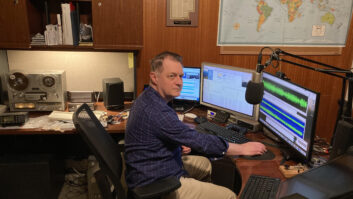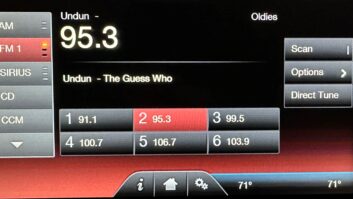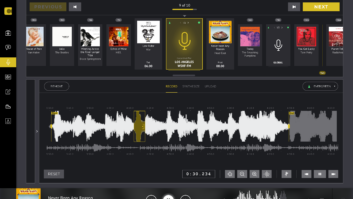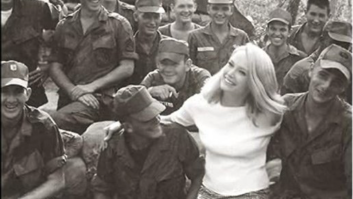As a former DJ (aka “radio personality”), I was fortunate to have started in 1980 when we still used turntables, cart machines, teletypes, and reel-to-reels (the “pre-digital” age, or, to some, “the stone age”). Back then there was an art to the mix and putting things together. Then companies like Arrakis, Broadcast Electronics, Smart, and others came out with digital automation and we let a computer handle that. If you happened to miss this era (meaning, you’re under the age of 30), here are links to our radio past. There are many sites we can look at. For an excellent comprehensive history of radio, I’d recommend Ken Burns’ “Empire of the Air: The Men Who Mad Radio” for an excellent review of the people behind the technology of broadcasting. But for this Off the Beaten Path let’s just look at some equipment and radio stories.
From the FCC comes “A Short History of Radio,” which includes the short version of the Ken Burns’ documentary as previously mentioned.
Here’s a fun historical site (though a little regional) about some of the famous DJs in history. It’s from DJ Master Control.

Yes, our military (and other country’s military forces) have radio “designed for the troops.” The theory behind military radio is that it is there “to inform and entertain,” plus to make those deployed oversees feel “a little closer to home.” I was a former AFRTS (Armed Forces Radio & Television Service) broadcaster for the U.S. Air Force. I spent most of my time at Torrejon Air Base outside of Madrid, from 1986 to 1989. AFRTS is now called AFN, or Armed Forces Network, for the U.S. members working in this career field. Unlike some military broadcasters, I did this during “peace time,” so it was relatively risk-free (less the occasional wooden tone-arm splinter, I guess). But not all those who served and worked for AFN had it easy, or safe! Here’s the fascinating, and sad, story about AFVN, or Armed Forces Vietnam Network, during the Vietnam era. As you read it, I think you’ll get a real sense of what they faced. The story is about Det. 5 of AFVN and how it was overrun by the enemy and the fighting that took place to stay alive. It’s far more than a “DJ story,” but the struggle to simply stay alive!
If you’d like to know a little more about the American Armed Forces Network, here’s a short PDF with some locations and dates to provide their history. Note that if you’d like to be a part of AFN (I’m not a recruiter, but certainly would recommend it for those wanting experience and training), you can see a recruiter for any of the branches of military. They often aren’t aware that this career field even exists. There are a couple related fields — the broadcaster and the broadcast engineer. Both (for all branches) are now trained at Fort Meade in Maryland.
If you have endless hours to spend studying radio history, here’s an excellent link (I’ve posted this before), worth mentioning again. Not only does it have extensive links to archived radio (and TV) magazines, but a ton of information about the history of broadcasting
Prof. Stanley Coutant of Pasadena City College created this website (another site I mentioned a long time ago here) all about microphones. No DJ (“air personality”) could begin to be to do a show if they couldn’t put their “golden tones” on the air. This website is an incredible resource (which includes recorded audio samples) of microphones. This is a site worth sharing with your mic collector friends.
If we look at the history of radio equipment, you’d have to know about the cart machine. From American Radio History comes the 57-page document (PDF) with everything you ever wanted to know about this radio technology “game changer.”
A Turntable in Action
From a YouTube’er comes this excellent video which will bring back memories for anyone who has back-cued a record for broadcast. THIS is how we did it!
A Razor Blade, Splice Block, Grease Pencil and Splicing Tape
In the “good ole days,” we didn’t have Adobe Audition or any digital editing systems. We had TAPE … and weeeee liked it (Dana Carvey old man imitation from SNL inserted here). Okay, maybe we didn’t like it, but it was a necessity for creating spots and recorded programs. This history of the reel-to-reel dates all the way back to Germany in the 1930s. Here’s a brief history of reel-to-reels with some cool pics. Of course, reel-to-reels weren’t the first “recording medium” as Edison cylinders, wire recorders, transcriptions (record cutting lathes), and other devices were cable of capturing sound, but tape was our first truly editable medium.
Into the late ’80s, many radio station news departments got their news from teletype machines. Changing ribbons, loading fanfold paper, and the constant tat, tat, tat, DING! of that teletype machine is an experience I don’t think anyone who experienced it will forget. Here’s the story.
And finally …
The Veterans Channel, a relatively new web channel dedicated to our veterans. You might find this interesting, informative, and entertaining.
If you stumble across a good or unusual website that might be of interest, please don’t hesitate to send me the link and any info you might have about it. My email address is [email protected].












